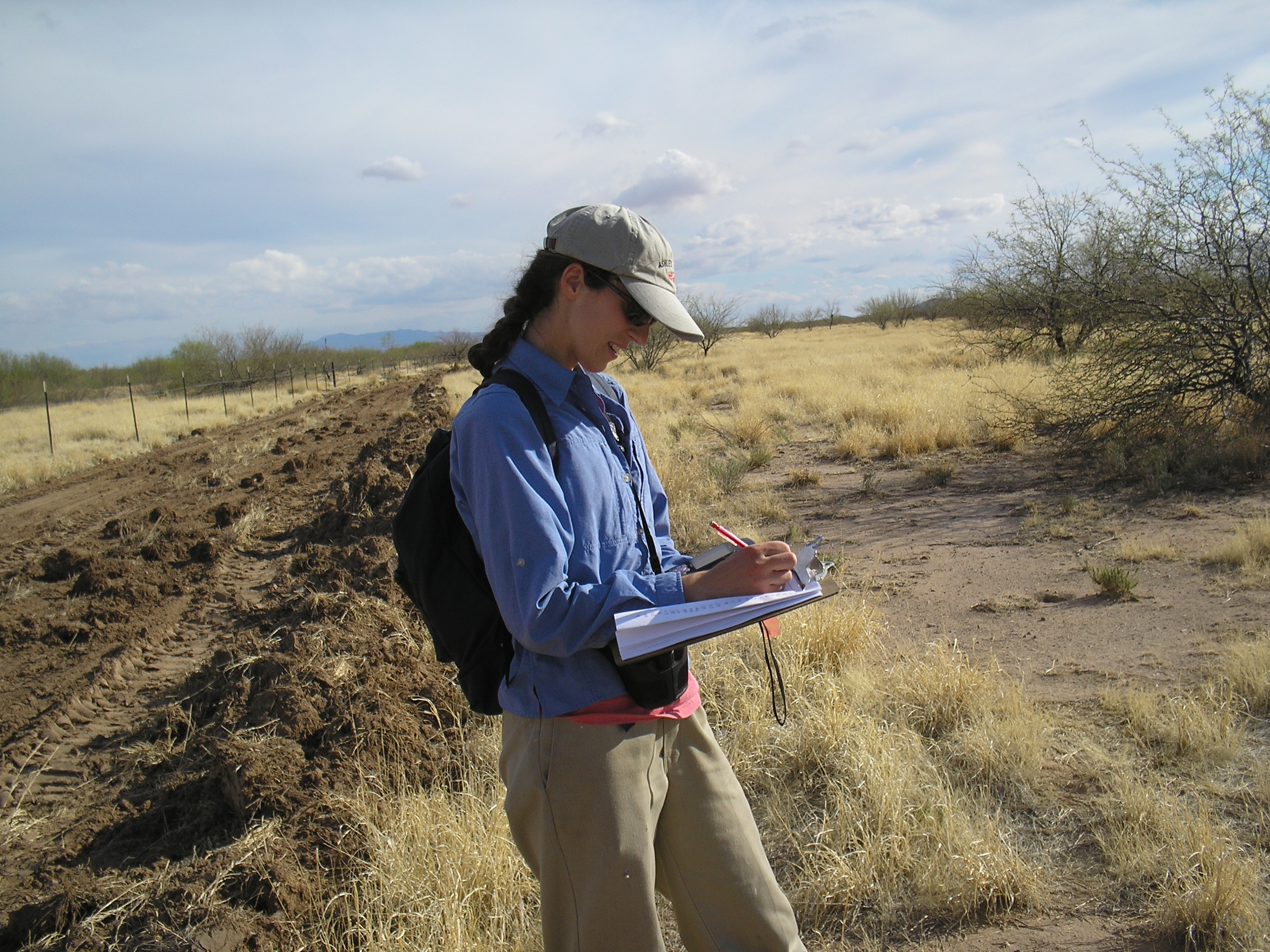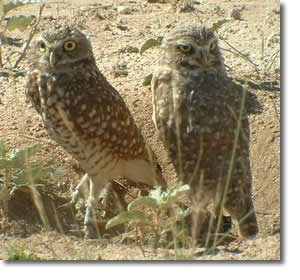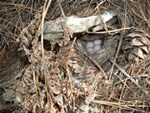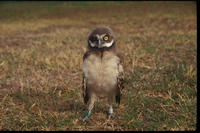 |
|
| |
Research
|
| |
Current Projects
click on the title of the project to learn more |
| |
|
| |
1. National Marsh Bird Monitoring and Research Program: A cooperative effort on management areas across North America |
|
|
| |
Populations of many species of marsh birds are thought to be declining in North America. Breeding Bird Survey (BBS) data suggests significant population declines for American bittern Botaurus lentiginosus and king rail Rallus elegans.Sample sizes available to detect trends for many other marsh birds are extremely small because the BBS does not adequately sample emergent wetlands. Continued... |
|
| |
|
| |
2. Factors influencing detection probability and the benefits of call broadcast surveys for monitoring marsh birds |
|
|
| |
Populations of many species of marsh birds are thought to be declining in North America. Despite the perceived population declines, we currently lack an effective monitoring program to estimate population trends of marsh birds. Continued... |
|
| |
|
| |
3. Effects of prescribed fire on Yuma Clapper Rails and California Black Rails on the lower Colorado River |
|
|
| |
The Yuma clapper rail (Rallus longirostris yumanensis) is a federally endangered species and 90% of the U.S. population exists in only 2 wetlands. California Black Rails (Laterallus jamaicensis coturniculus) are state endangered in Arizona and state threatened in California. To ensure long-term persistence of these two species, we need to have effective management and mitigation activities that improve habitat quality and restore populations. Continued... |
|
| |
|
|
|
| |
4. Fitness costs of migration: Comparative demography of burrowing owls in North America |
|
|
| |
Burrowing owls (Athene cunicularia) in North America have suffered population declines in many areas and significant range contraction. Burrowing owls are considered endangered in Minnesota, Iowa, Mexico, and Canada, and populations have declined significantly in British Columbia, Alberta, Arizona, California, Colorado, Kansas, Nebraska, Nevada, New Mexico, Utah, and Washington. Continued... |
|
| |
|
|
|
| |
5. Migratory linkages of burrowing owls on Department of Defense installations and adjacent lands |
|
|
| |
One possible explanation for the observed population declines in Burrowing Owls is that they are becoming less migratory; owls which once migrated to northern breeding locations during the summer are becoming year-round residents in the southwestern U.S. and northern Mexico. In other words, owl populations might be redistributing rather than declining. Continued... |
|
| |
|
|
|
| |
6. Effects of clutch size on incubation efficiency and nest attentiveness in passerines |
|
|
| |
Small birds may incur fitness costs associated with incubating a larger clutch that have been largely ignored in previous studies attempting to explain variation in avian clutch size. In this project, we are evaluating these potential limits on clutch size acting during the incubation period. Continued... |
|
| |
|
|
|
| |
7. Effects of ground water withdrawal and surface water depletion on riparian birds in the southwestern U.S. |
|
| |
Riparain woodlands in the southwestern U.S. support a wealth of biological diversity and provide habitat for many species of breeding and migratory birds. However, the health and persistence of these woodlands are being threatened by increasing demands for limited groundwater resources in the region. Continued... |
| |
|
|
| |
8. Montane forest birds: breeding biology, habitat associations, and identification of nest predators |
|
| |
High-elevation montane forests in the southern Arizona support a unique and diverse avian community, including populations of several species of conservation concern such as the red-faced warbler (Cardellina rubrifrons). This avian community is vulnerable to disturbance. Continued... |
| |
|
| |
9. Using Lidar to map distribution and abundance of the Red-faced Warbler |
|
| |
With funding from the Arizona Game and Fish Department Heritage Fund, we are combining lidar (Light Detection and Ranging) data and avian point-count data to create a series of predictive models of the distribution and abundance of red-faced warblers in Arizona. Continued... |
| |
|
| |
|
| |
Past Projects
click on the title of the project to learn more |
| |
|
| |
1. Monitoring protocols, population trends, and habitat trends of California Black Rails |
|
|
| |
California black rails are threatened in California and endangered in Arizona, yet no estimates of population trends are available and distribution in the southwestern US is poorly known. Continued... |
 |
| |
|
| |
2. Comparative demography of Burrowing Owls in urban and agricultural landscapes in southern Arizona |
|
|
| |
Despite perceived population declines in many portions of their range, burrowing owls are fairly common in urban areas throughout the western U.S. Burrowing owls are limited in some areas by available nest sites and urban areas often have natural and artificial cavities within which burrowing owls can nest. Continued... |
|
| |
|
| |
3. Burrowing owl conservation in the presence of endangered potential prey species on Naval Base Coronado, CA |
|
|
| |
Burrowing owls are listed as a species of special concern and have been proposed for listing as an endangered species in California. Naval Base Coronado (NBC), San Diego, supports one of the largest remaining populations of burrowing owls in coastal southern California. NBC also supports the federally endangered California Least Tern (Sterna antillarum browni) and federally threatened Western Snowy Plover (Charadrius alexandrinus nivosus). In the past, burrowing owls that have preyed on terns or plovers have been taken or relocated. Continued... |
|
| |
|
| |
4. Glyphosate Applications to Control Buffelgrass in Pima County: Effects on Burrowing Owls |
|
 |
| |
Many land management agencies have begun efforts to remove buffelgrass (Pennisetum ciliare) in southern Arizona. Burrowing owls prey upon herbivorous insects and small mammals, and hence, members of the City of Tucson Technical Advisory Committee have expressed concern that chemicals contained in glyphosate herbicides (Roundup ®, Kleenup ®) may bioaccumulate and possibly cause deformities, mortalities, or reduced reproductive success in burrowing owls. Continued... |
|
| |
|
| |
5. Reproductive success and survival of Burrowing Owls at Casa Grande Ruins National Monument and surrounding agricultural areas |
|
|
| |
Burrowing owls (Athene cunicularia hypugaea) were once a common and conspicuous breeder in grasslands and deserts throughout the western United States. However, populations of western burrowing owls appear to have declined in many portions of their range. In Arizona, only small populations of burrowing owls persist in desert, agricultural, and urban environments. Continued... |
|
| |
|
| |
6. Comparison of survey methods and effects of habitat features on reproductive success of Burrowing Owls in Wyoming |
|
|
| |
Western Burrowing Owl populations are thought to have declined in many portions of their breeding range. However, reliable survey data with which to accurately estimate population trends are not available. Continued... |
|
|
|
|
7. Population ecology and habitat requirements of Burrowing Owls in eastern Washington |
|
|
|
Burrowing Owl populations have declined in many portions of their breeding range and a candidate species for state listing in Washington. Availability of nesting burrows is one factor thought to limit populations, but birds often disappear from or fail to occur in what appears to be suitable habitat with burrows available. Continued... |
|
|
|
|
8. Conservation of Burrowing Owls on golf courses in North America |
|
|
|
Burrowing Owl populations have declined in many portions of their breeding range. Availability of nesting burrows is one factor thought to limit populations. Throughout their range, Burrowing Owls appear to be attracted to golf courses for foraging. However, the area surrounding golf courses may lack suitable nesting burrows. Continued... |
|
|
|
|
9. Effects of Habitat Use on Survival and Physiological Condition of Wintering Neotropical Migratory Birds in Belize |
|
|
|
Some species of Neotropical migratory bird populations have experienced declines in recent years. Knowledge of the causes of population changes is critical to effective conservation efforts and migrant population declines are thought to be at least partially a result of habitat alteration on wintering grounds. Continued...
|
|
|
|
|
10. Distribution, abundance, detection probability, and nest-site selection of Band-tailed Pigeons in Southern Arizona |
|
|
|
The band-tailed pigeon (Patagioenas fasciata) is a migratory game bird that breeds in two distinct regions within North America - a coastal population in California, Oregon, Washington and British Columbia and an interior population in Mexico, Colorado, Utah, New Mexico and Arizona. Continued... |
|
|
|
|
11. Effects of wildfires on abundance and distribution of montane birds in southeastern Arizona |
|
|
|
The frequency of wildfires in montane forests of the southwestern U.S. has increased after a century of fire suppression and subsequent fuels accumulation. To assess the effects of recent wildfires on the montane forest bird community, we surveyed birds in several Sky Island mountain ranges in southeastern Arizona and examined how the distribution and relative abundance of bird species correlated with evidence of severe and less-severe fire along our survey routes. Continued... |
|
|
|
|
12. Buff-breasted Flycatchers; distribution, population trends, and effects of fire |
|
|
|
The distribution of Buff-breasted Flycatchers (Empidonax fulvifrons) in the U.S. once extended from the Mexico border north to Prescott, Arizona, east to west-central New Mexico, and south along the Continental Divide. However, the distribution of Buff-breasted Flycatchers decreased markedly in Arizona between the late 1800s and 1970. Continued...
|
|
|
|
|
|
|
|
|
|
|
|

.jpg)



![[Image]](research/National%20Marsh%20Bird%20Monitoring...%20North%20America/images/LEBI.jpg)
![[Image]](research/Factors%20affecting%20detection%20probability...%20marsh%20birds/images/AMBI.jpg)
![[Image]](research/Effects%20of%20prescribed%20fire%20on%20Yuma%20Clapper%20Rails/images/102-0299_IMG.jpg)
![[Image]](research/Fitness%20costs%20of%20Migration...Burrowing%20Owls/images/golf1legs.jpg)
![[Image]](research/Effects%20of%20clutch%20size%20on%20incubation%20efficiency%20in%20passerines/images/Datalogger3.jpg)

![[Image]](research/Monitoring...trends%20of%20California%20Black%20Rails/images/blra%20%201.jpg)
![[Image]](research/Comparative%20demography%20of%20Burrowing%20Owls%20in%20urban...Arizona/images/AMARC%2014%20pair.jpg)
![[Image]](research/Reproductive%20success%20and%20survival%20of%20Burrowing%20Owls%20at%20Casa%20Grande%20Ruins%20National%20Monument%20and%20surrounding%20agricultural%20areas/images/0899435-R1-007-2.jpg)
![[Image]](research/Comparison%20of%20survey%20methods....Burrowing%20Owls%20in%20Wyoming/images/Katie%20GPSing%20burrow%20in%20WY.jpg)
![[Image]](research/Population%20Ecology....Burrowing%20Owls%20in%20eastern%20Washington/images/327.jpg)
![[Image]](research/Conservation%20of%20Burrowing%20Owls%20on%20golf%20courses/images/332.jpg)
![[Image]](research/Effects%20of%20habitat%20use%20on%20survival....%20Belize/images/207.jpg)
![[Image]](research/Distribution,%20abundance....Band-tailed%20Pigeons/images/EML,%20KMH,%20BTPI.jpg)
![[Image]](research/Effects%20of%20catastrophic%20wildfire%20on%20Montane%20Birds%20in%20southeastern%20Arizona/images/Aspen%20Fire%203.jpg)
.jpg)